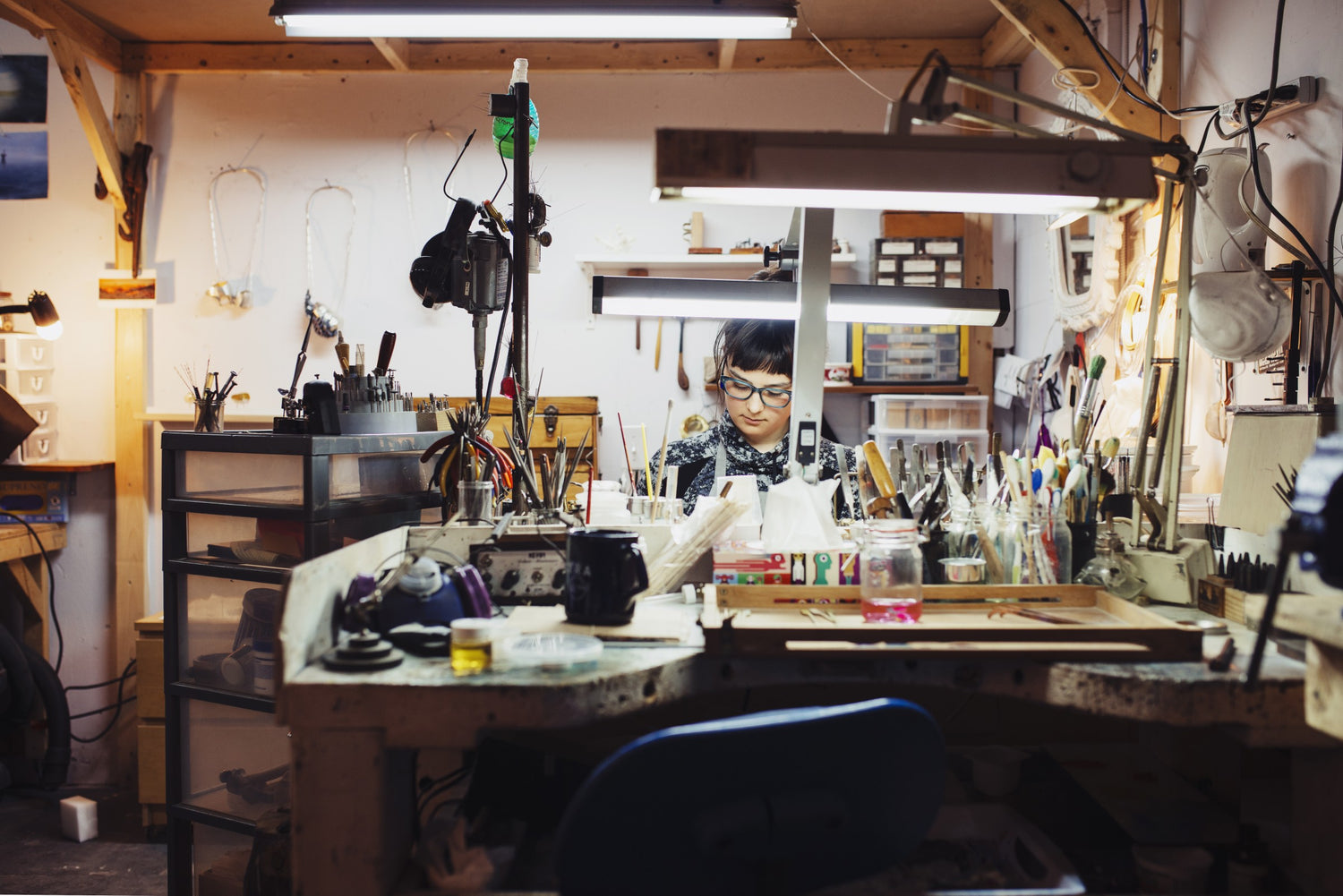Everywhere in Quebec, it is the period of admissions to CEGEP. Like every year, hundreds of thousands of students have to decide on a career choice. Some will head for pre-university training, others for technical training. Among those who will choose the latter, why not look into the techniques of fine crafts, these techniques so enriching and yet so little known in the college course?

Violin-making option
Photo credit: LM Chabot
What are fine craft techniques?
Craftsmanship techniques are offered in many fields such as ceramics, sculpture, textile construction, lutherie-violin, lutherie-guitar, artisanal cabinetmaking, jewellery, textile printing, glass and leather goods. Each year, nearly 200 students are divided between these various disciplines in each of the CEGEPs offering training. For the city of Quebec, it is the Cégep Limoilou , Quebec City campus, with the collaboration of schools of crafts that offer the techniques concerned. In the case of Montreal, it is the Cégep du Vieux-Montréal and the craft schools with which it collaborates that offer them.
You should know that these artistic techniques do not require any prerequisites or special skills, except, perhaps, fine dexterity. However, a great maturity is required from students who follow such study programs. A sustained commitment is required of them. These programs require a lot of work. You have to manage to master several techniques and to express yourself in a material. This is part of a long time and brings a lot of thought. This is why a desire to succeed in this long process of creation and self-discovery is essential.

Cabinetmaking Option
Photo credit: LM Chabot
The Benefits of Craft Techniques
These types of techniques allow students to evolve in a workshop-like environment and learn in small groups with experienced teachers who are experts in their field. This method promotes individualized teaching. In addition, the training has a common core focused on the development of entrepreneurial skills. These study programs therefore train self-employed workers who have the capacity to manage their own business or their own workshop at the end of their college career.
A questioning about future employment opportunities sometimes accompanies the choice of a technique focused on creation such as these. However, the possibilities are increasing with the return of the handmade that we are currently seeing. Indeed, a change in society is taking place: we are looking more and more for the human in the products we consume. This leads the population to consume more artists' products, which is encouraging for graduates of fine craft techniques.
According to Isabelle Métivier of Cégep du Vieux-Montréal, their graduates are more present on the market and many of them continue in the field in which they studied. Social networks and the increase in markets are not factors to be overlooked either. The latter, in addition to increasing opportunities, allow artists to become known both locally and abroad.

Textile Printing Option
Photo credit: LM Chabot
Barriers to studies in fine crafts
Aside from the concern for employment opportunities, there are still a few obstacles that hinder and sometimes prevent students from enrolling in such programs. First, we must consider that the choice to become an artist implies that you have to work hard for a long time before making money. The entrepreneurial side can sometimes scare some people off. Otherwise, the question of longevity may worry some. It's true that it's important to stand out and offer diversified products to really stand out on the market.
Despite this, the major obstacle to the registration of young people in crafts is the false reality propagated on crafts by society. Our society's reference to fine crafts dates back 25 years, according to Mr. Yvon Noël, interim general manager of the Maison des Métiers d'Art de Québec . In some cases, people only see the marketing. However, craftsmanship is much more than that. It is not just a simple production of consumer goods that are more artistic than usual, but the manufacture of unique objects, meaningful to people and denoting a real process of creation. The population must be better informed about the reality of crafts in order to fully appreciate them and be open to them.

Leather goods option
Photo credit: LM Chabot
In short, arts and crafts techniques are enriching and rewarding fields of study for students who decide to pursue them. Yes, the course is strewn with pitfalls, but the game is worth the effort. And in a society that is turning more to the handmade and the local purchase, this is clearly an option to be considered by all artists when it comes time to apply for admission to CEGEP. The world needs its artists to enrich its culture.
Thanks to Yvon Noël, Acting Director General of the Maison des Métiers d'Art de Québec, to Isabelle Métivier, administrative technician and communications manager at the Institut des métiers d'art and to Catherine Lachapelle of the École de Joaillerie from Montreal.
Cover: LM Chabot

Reviewed by: Maud Duchesne





Leave a comment
This site is protected by hCaptcha and the hCaptcha Privacy Policy and Terms of Service apply.